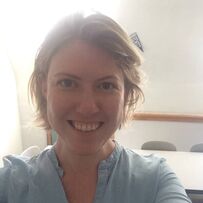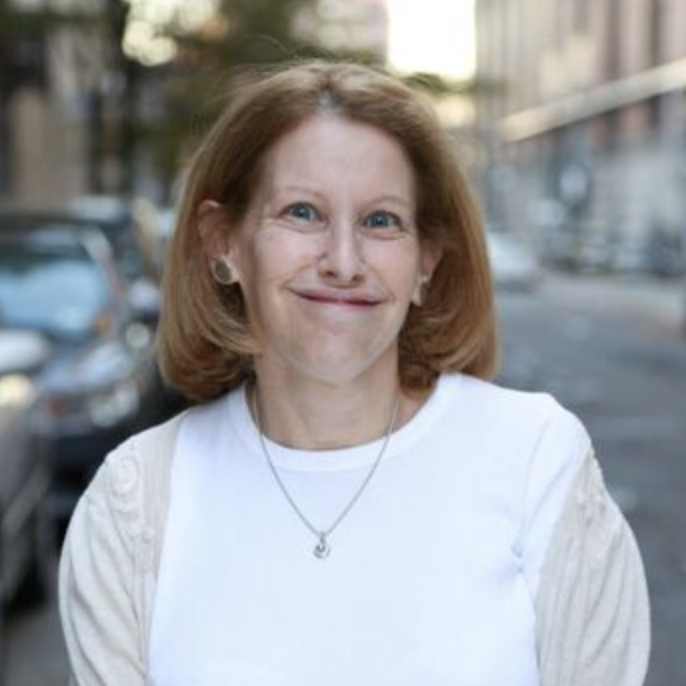The Untold Stories of how three women lived the American Revolution
Presenters: Georgina Emerson and Rachelle Friedman
According to the National Women’s History Museum’s 2017 Report on the status of women, many students graduate high school having heard the names of fewer than 10 women in all four years of history class. Most of them are white. We are changing that.
This session examines the different voices of women who lived during the American Revolution. By considering background, class, race, and orientation, it aims to consider individuals marginalized from traditional narratives.
Slideshow | Turnkey Student Materials
According to the National Women’s History Museum’s 2017 Report on the status of women, many students graduate high school having heard the names of fewer than 10 women in all four years of history class. Most of them are white. We are changing that.
This session examines the different voices of women who lived during the American Revolution. By considering background, class, race, and orientation, it aims to consider individuals marginalized from traditional narratives.
Slideshow | Turnkey Student Materials
The Details
In a time when women continue to fight to be taken seriously as leaders, paid equitably and respected in their bodies and minds, we urgently need to teach young people to see women as full and active participants in the human experience. In this session, Our first objective is for teachers to have access to a variety of women's voices, voices that are not usually explored in the middle and high school classroom, including those of working class, women of color, trans-gender folks.
The focus of our work will be examining the lives of Deborah Sampson Gannett, Madam Sacho, and Lucy Terry Prince through primary sources highlighting their own words. We aim to show that not only did women participate in and contribute to the American Revolution, as we already know, but that their involvement was shaped by their identities. Drawing on the latest research, we take an intersectional approach to incorporating women’s voices into our classroom materials and practices.
Our second objective is to help teachers develop strategies for incorporating women's history into their lessons by deeply reading primary sources and how to evaluate for comprehension and analysis. By reading the sources together during our session, we hope that teachers will leave with a greater understanding of the time period and the ways in which primary sources can support that.
Our third objective is to give teachers strategies for embracing hard history. We will examine the lives of traditionally marginalized groups to restore their roles in history in hopes that students and teachers alike can explore today’s most pressing concerns with a more complete picture of the human experience.
The focus of our work will be examining the lives of Deborah Sampson Gannett, Madam Sacho, and Lucy Terry Prince through primary sources highlighting their own words. We aim to show that not only did women participate in and contribute to the American Revolution, as we already know, but that their involvement was shaped by their identities. Drawing on the latest research, we take an intersectional approach to incorporating women’s voices into our classroom materials and practices.
Our second objective is to help teachers develop strategies for incorporating women's history into their lessons by deeply reading primary sources and how to evaluate for comprehension and analysis. By reading the sources together during our session, we hope that teachers will leave with a greater understanding of the time period and the ways in which primary sources can support that.
Our third objective is to give teachers strategies for embracing hard history. We will examine the lives of traditionally marginalized groups to restore their roles in history in hopes that students and teachers alike can explore today’s most pressing concerns with a more complete picture of the human experience.
Resources
Slideshow
Five Questions for Making Women part of the story
Primary Sources
Useful Secondary Sources
| Approaches to Pedagogy | |
| File Size: | 1143 kb |
| File Type: | |
| Historical Summary, Christine Stansell | |
| File Size: | 523 kb |
| File Type: | |
| Patriarchal Equilibrium, Judith Bennet | |
| File Size: | 494 kb |
| File Type: | |
| Susan Hylen on the concept of Historically-situated Agency | |
| File Size: | 271 kb |
| File Type: | |
|
Georgina Emerson is the founder and director of Teach About Women. A native New Yorker and a graduate of the Chapin School, she holds a BA in History and MA in Comparative Literature from Dartmouth College as well as a degree in History from L’École des Hautes Études en Sciences Sociales. I have taught for many years in charter and private schools. The focus of her work is curriculum design and providing collaborative professional development for K-12 teachers who want to make equity work part of every aspect of school life. In addition to teaching and giving workshops, she is currently at work on a book and high school curriculum on the history of women, gender, and power. She currently teaches at The Spence School.
|
Work with us
Georgina and Rachelle both are available for curriculum coaching, faculty workshops and curriculum design. Fill out the form below or call Teach About Women at (212) 390-1745.

